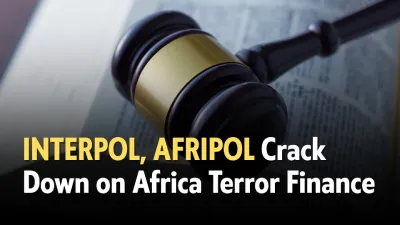Peso Depreciation to 59:$1 Likely Amid Strong Dollar Surge
Abstract:Peso could fall to 59:$1 but further depreciation is unlikely as the BSP stands ready to defend the currency, ING Bank forecasts.

The Philippine peso is showing signs of further weakness, with financial experts predicting it may reach a record low of 59 per US dollar. This forecast is largely driven by a stronger US dollar, which continues to benefit from “safe-haven” demand following recent US political developments. However, analysts believe that while the peso could hit the 59 level, it is unlikely to weaken beyond this point due to the readiness of the Bangko Sentral ng Pilipinas (BSP) to intervene in the currency market.
ING Bank, in a recent report, suggested that while the peso faces downward pressure, there are factors that could help stabilize it. One such factor is a reduction in the country's import bill, aided by falling global oil prices. The BSP has also shown a historical preference for defending the 59-level, making further depreciation less likely in the near term.

The central bank's foreign exchange reserves, which stood at $112.43 billion in October, provide a strong buffer for such interventions. ING notes that the peso's recent struggles are compounded by expectations of rate cuts by the BSP, which could further fuel the currency's decline.
Despite this, analysts believe the peso will remain within the 56 to 58 per dollar range for the remainder of the year. The government's forecast for the peso in 2024 was based on this assumption, but the actual performance of the currency has been worse than expected.
Further complicating matters, the recent cuts to the BSPs policy interest rates—down to 6 percent—are part of a broader dovish monetary cycle that aims to support economic growth. However, with third-quarter GDP growth falling short of expectations, some experts suggest that the BSP may reconsider its approach to rate cuts if the peso's weakness persists.
In a statement, BSP Governor Eli Remolona hinted at a potential 25-basis-point cut in December, which would continue the bank's gradual easing cycle. However, should the peso remain under pressure, the central bank may halt further rate cuts in a bid to curb capital outflows, which could exacerbate the currencys decline.
Final Thoughts
While the peso faces challenges due to the global strength of the US dollar and internal monetary policy moves, the BSP's strong reserves and willingness to defend the currency provide a buffer against further significant depreciation. How the central bank responds to economic data and market trends will play a crucial role in stabilizing the peso moving forward.

Read more

Forex Broker Scams Surge Across Asia’s Trading Markets
Investment scams tied to fake forex brokers and crypto exchanges are rising in Asia, exploiting weak KYC rules and targeting cross-border investors.

ASIC Launches Preliminary Investigation into Clime Australian Income Fund
The Australian Securities and Investments Commission (ASIC) has launched a preliminary investigation into the Clime Australian Income Fund, examining whether the Fund’s Target Market Determination (TMD) and Product Disclosure Statement (PDS) comply with Australian financial regulations. The investigation will also assess whether any breaches of the law have occurred in relation to the Fund’s investment activities.

Philippines Digital Fraud Crisis 2025: $8.29B Scam Losses Soar
The Philippines ranks 2nd globally in digital fraud with $8.29B annual losses. Government bans POGO, enacts laws, and fights rising scam calls in 2025.

INTERPOL, AFRIPOL Crack Down on Africa Terror Finance
83 arrests and $260M uncovered in INTERPOL-AFRIPOL’s Africa terror financing crackdown under Operation Catalyst 2025.
WikiFX Broker
Latest News
Forex24 Faces CySEC Fine for Late Compliance Filing
One Wrong Move Wiped Out a Government Retiree’s Lifetime Savings
MH Markets Review 2025: Trading Platforms, Pros and Cons
Octa FX in Pakistan: The Complete Guide to Local Payments, Regulation, and Support
Mekness Review: Traders Report Alleged Fund Scams & Account Blocks
INTERPOL, AFRIPOL Crack Down on Africa Terror Finance
Forex Scam Checker Philippines: Verify Brokers with WikiFX
"Our Business Has Died": Texas Services Sector Sentiment Slumps Further In October
D Prime to Exit Limassol Office Amid Doo Group Restructure
Fake Trading Platforms Are Spreading Fast Across Asia | How Investors Are Being Tricked
Rate Calc

